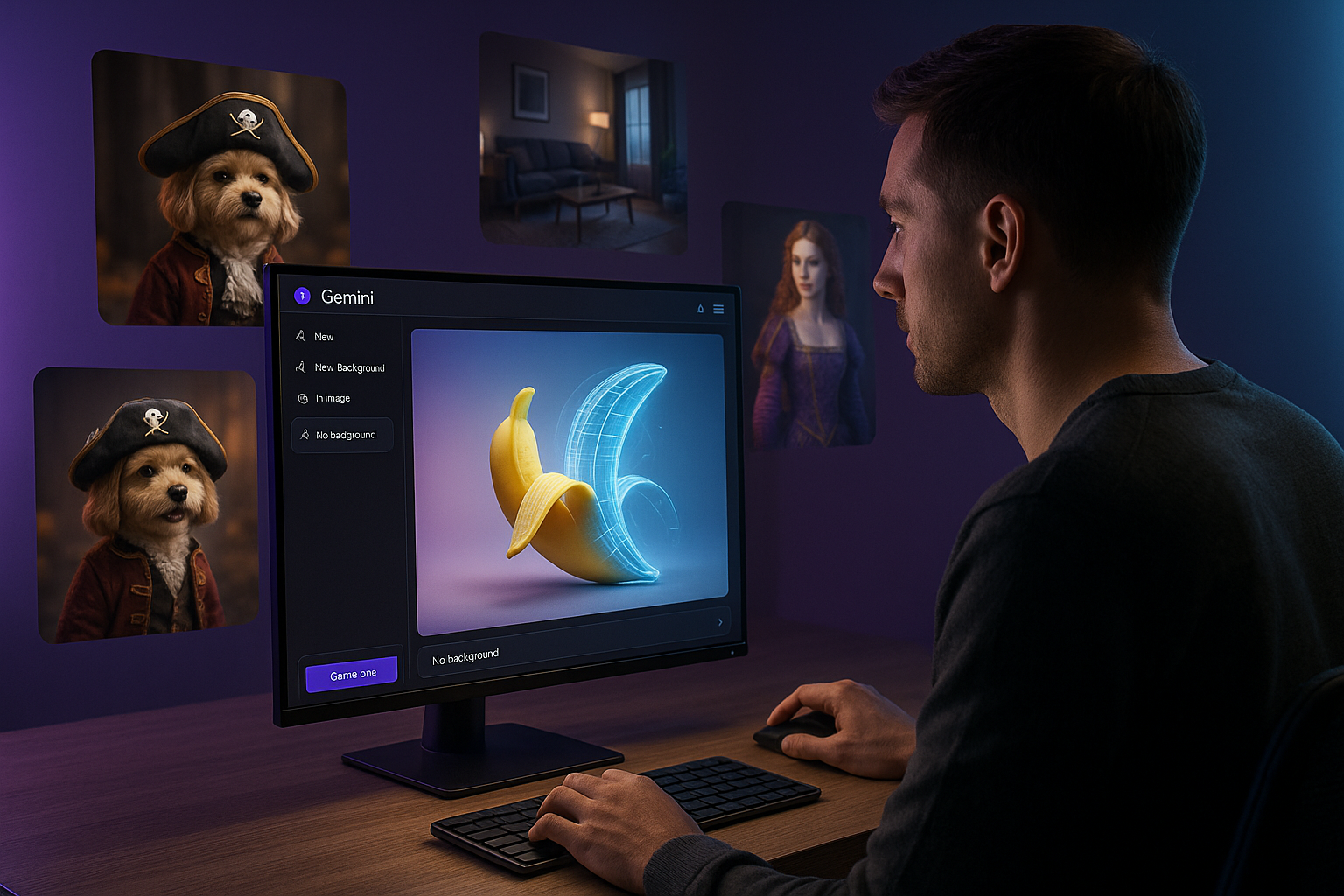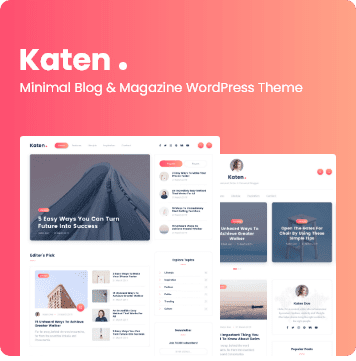
Artificial Intelligence is rewriting the way we create and interact with digital media, and Google is once again at the forefront. Its latest feature, codenamed “Nano Banana”, has just been rolled out inside the Gemini app as part of the Gemini 2.5 Flash Image update. While the quirky name grabbed attention, the technology underneath is a serious upgrade—reshaping how professionals, creators, and casual users can manipulate and enhance images.
This blog will explore everything about Nano Banana: what it is, how it works, why it matters, its use cases, and a few limitations you should know before you dive in.
—
What Exactly Is Nano Banana?
Despite sounding like a futuristic fruit, Nano Banana is the codename for Gemini’s latest image editing model, now available inside Gemini on web and mobile. It’s officially called Gemini 2.5 Flash Image, but the codename stuck after Google executives playfully teased it on social media.
The tool allows users to:
Generate high-quality AI images instantly.
Edit existing photos with simple text prompts.
Maintain consistency of faces, objects, and characters across multiple edits.
Blend or combine multiple photos into a single frame.
Apply stylistic changes—textures, backgrounds, colors—without losing realism.
For developers and businesses, Nano Banana is also accessible via Google AI Studio, Vertex AI, and the Gemini API, making it easy to build advanced creative workflows.
—
Why Nano Banana Stands Out
AI image editing isn’t new—tools like MidJourney, Stable Diffusion, and OpenAI’s DALL·E have been widely used. But Nano Banana brings three unique advantages:
1. Visual Consistency
One long-standing problem with AI visuals is inconsistency. You edit a photo twice, and the subject ends up looking like a completely different person. Nano Banana changes that. It keeps character and object identities intact, even after multiple refinements.
2. Conversational Editing
Instead of restarting each time, Nano Banana allows multi-turn edits. Imagine uploading a photo of your living room, asking Gemini to add a wooden bookshelf, then following up with, “Now place a small coffee table in front.” The model remembers your earlier edits and stacks new changes seamlessly.
3. World Knowledge + Visual Intelligence
Unlike narrow image generators, Nano Banana integrates Gemini’s broader knowledge of the world. If you ask it to create a Renaissance-style portrait, design a traditional Indian mandap, or blend a smartphone into a futuristic setting, it pulls from cultural and contextual knowledge—not just pixels.
—
How It Works in Practice
Using Nano Banana is simple:
1. Open Gemini (Web or App) → Upload a photo or start fresh.
2. Type a Prompt → e.g., “Turn this selfie into a Pixar-style portrait with neon lighting.”
3. Refine Edits → Follow up with conversational tweaks like “make the background look like New York at night.”
4. Blend Multiple Inputs → Upload two photos (say, yourself and your pet) and merge them into one lifelike scene.
5. Download & Share → Final images come watermarked with Google’s SynthID, but third-party tools like Imogen (built on Gemini tech) allow watermark-free editing.
—
Creative Possibilities with Nano Banana
The applications are endless, but here are some exciting directions:
Personal Makeovers
Try out new hairstyles, fashion styles, or even fantasy outfits while staying true to your real face.
Pet Portraits with Personality
Dress up pets in costumes or situational themes—like a cat in a detective trench coat—without losing their original charm.
Interior Design Visuals
Upload a photo of a blank room and watch Gemini fill it with couches, décor, lighting, or even seasonal setups.
Marketing & E-Commerce
Brands can instantly place products into different backgrounds, environments, or design themes for ads without expensive photoshoots.
Artistic Storytelling
Writers and content creators can build visually consistent characters across multiple images for storytelling, comics, or brand mascots.
—
Early Reactions & Real-World Feedback
Enthusiasts on forums like Reddit are already calling Nano Banana “a game-changer.” Many highlight its consistency in character design and ease of conversational edits as the standout upgrades.
However, a few limitations exist:
Sometimes edits fail and produce identical images.
Repeated modifications may create artifacts (like distorted facial features).
Watermarks (both visible and invisible) remain standard.
Performance varies with highly complex or abstract requests.
That said, the overall response is overwhelmingly positive—especially from marketers, designers, and hobbyists looking for reliable editing tools.
—
Why the Name “Nano Banana”?
The playful codename became public when Google’s CEO Sundar Pichai tweeted three banana emojis, hinting at the launch. The humor worked—tech blogs and social media went buzzing about “Nano Banana” even before Google officially confirmed it as Gemini 2.5 Flash Image.
It’s an example of Google’s marketing brilliance: use a funny codename, spark curiosity, and then reveal a powerful product behind it.
—
Limitations You Should Know
While Nano Banana is powerful, keep these points in mind:
Watermark Policy: Every image carries a visible Gemini mark and an invisible SynthID signature for authenticity.
Performance Issues: After several edits, image fidelity sometimes drops.
Regional Restrictions: Sensitive content (like family photos or regulated categories) may face extra moderation.
Not Perfect Yet: Like any AI tool, it’s evolving—complex edits may still need manual design tools.
—
The Business Side: Pricing & Access
For individuals, Nano Banana is available inside the Gemini app (free and premium versions). For developers and companies, it can be accessed via Gemini API with usage-based pricing.
Currently, the cost is around $0.039 per generated image through API calls—competitive compared to other AI platforms. For small businesses and agencies, this makes Nano Banana both affordable and scalable.
—
Final Thoughts: Why Nano Banana Matters
Nano Banana may sound humorous, but its impact is serious. For the first time, AI editing feels smooth, conversational, and reliable. It empowers professionals to reduce design costs, helps small creators bring their visions to life, and gives casual users a fun way to reimagine everyday photos.
The playful branding hides an important truth: Gemini is racing to lead the AI image editing industry, and with Nano Banana, it just moved one step closer.
As AI becomes more mainstream, tools like this won’t just be novelties—they’ll become daily utilities for work, creativity, and storytelling.
—
Key Takeaways
Nano Banana = Gemini 2.5 Flash Image.
Offers consistent, multi-turn, conversational editing with real-world intelligence.
Great for personal, creative, and business use cases.
Some drawbacks: watermarking, occasional glitches, fidelity loss after heavy editing.
Available in Gemini app (free & premium) + Gemini API for developers.




Leave a Reply